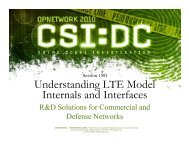Automated Axon Tracking of 3D Confocal Laser Scanning ...
Automated Axon Tracking of 3D Confocal Laser Scanning ...
Automated Axon Tracking of 3D Confocal Laser Scanning ...
You also want an ePaper? Increase the reach of your titles
YUMPU automatically turns print PDFs into web optimized ePapers that Google loves.
points are lying on the axons or in the background. This minimizes the chances <strong>of</strong> seed pointsdetected outside the axons, either due to noise or other structures in the image. Figure 3 showsthe automatic detected seed points in the MIP image and their alignment towards the center.(a)(b)Figure 3 – Automatic detection and alignment <strong>of</strong> seed points: (a) seed points detected on a grid with a resolution <strong>of</strong>20 pixels, and (b) Center-aligned seed points. The scale bars in the figures correspond to 6μm.The two-dimensional MIP tracking method begins by defining directional templates for each<strong>of</strong> sixteen quantized directions for detecting the edges, angle <strong>of</strong> orientation, and the center points<strong>of</strong> axons present in the MIP image. As mentioned earlier, the seed points detected automaticallyin the MIP image are aligned towards the center <strong>of</strong> the axon on which they lie. With the firstunaligned seed point as center, the edges <strong>of</strong> the corresponding axon are detected by correlatingthe templates with the image at varying distances from this seed point. The angle at which thetemplate response is greatest is considered as the angle <strong>of</strong> orientation <strong>of</strong> the axon at thatparticular location. The distances from either side <strong>of</strong> the center at which the template response isgreatest are considered as the edges. This edge information is then used to align the seed points11















